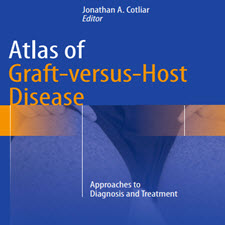Human Retrotransposons in Health and Disease
ABSTRACT
Retrotransposons are a class of mobile genetic elements that make up around 40% of the sequenced mammalian genome (Chinwalla et al. 2002; Lander et al. 2001). Retrotransposons contribute to genomic instability in mammalian genomes by providing interspersed repeats of homologous sequences that can act as substrates for recombination causing deletions, duplications and structural rearrangements in the genome (Romanish et al. 2010). Retrotransposons are thought to be the only active class of mobile genetic element in most mammalian genomes, and can also cause genome instability through jumping to new locations in the genome. These de novo retrotransposon insertions have been reported as the causal mutation in various human genetic diseases (Crichton et al. 2014; Hancks and Kazazian 2012). The copy-and-paste mechanism that retrotransposons use to jump to new locations in the genome involves reverse-transcription of retrotransposon RNA, and integration of the resulting cDNA into new locations in the genome. There are typically a few hundred different types of retrotransposon annotated in each mammalian genome, with each type of retrotransposon being present in up to 10,000 copies. However, the types of retrotransposon, their copy numbers and their genomic locations vary signifcantly between species.
INTRODUCTION
Mammalian retrotransposons are classifed into LINE (long interspersed nuclear elements), SINE (short interspersed nuclear elements) and LTR (long terminal repeat) retrotransposon classes (Chinwalla et al. 2002; Lander et al. 2001). Each class of retrotransposons can be further subdivided into families, and each family into individual types. The LINE class of retrotransposons in mammals is primarily represented by the LINE-1 family. Only the human-specifc L1HS-Ta subfamily of LINE-1 is still active in the human genome, whereas the L1MdA, L1MdTf and L1MdGf types of LINE-1 are all active in the mice (Beck et al. 2011; Hancks and Kazazian 2012; Sookdeo et al. 2013). Full-length LINE-1s are typically 6–7 kb long and are transcribed from an internal promoter located in the 5′ untranslated region (UTR) of these elements (Beck et al. 2011; Hancks and Kazazian 2012; Swergold 1990). The LINE-1 promoter also generates an antisense transcript that can extend into the adjacent flanking cellular DNA (Cruickshanks et al. 2013; Li et al. 2014; Macia et al. 2011; Speek 2001).
چکیده
Retrotransposons یک کلاس از عناصر ژنتیکی تلفن همراه است که حدود 40٪ از ژنوم پستانداران تعیین شده را تشکیل می دهند (Chinwalla و همکاران، 2002؛ Lander و همکاران، 2001). Retrotransposons به ایجاد بی ثباتی ژنوم در ژنوم پستان کمک می کند با تکرار تکرارهای توالی homologous که می تواند به عنوان زیرمجموعه برای نوترکیب، باعث حذف، تکثیر و بازسازی ساختاری در ژنوم (Romanish و همکاران 2010) کمک کند. به نظر می رسد Retrotransposons تنها کلاس فعال عنصر ژنتیکی تلفن همراه در اکثر ژنوم های پستاندار است و همچنین می تواند باعث بی ثباتی ژنوم از طریق پریدن به مکان های جدید در ژنوم شود. این de novo retrotransposon درج شده است به عنوان جهش علی در بیماری های مختلف انسان ژنتیکی (Crichton و همکاران 2014، Hancks و Kazazian 2012). مکانیزم کپی و پیست که retrotransposons استفاده برای پرش به مکان های جدید در ژنوم شامل رونویسی معکوس RNA retrotransposon و ادغام cDNA حاصل به مکان های جدید در ژنوم است. به طور معمول چندصد نوع مختلف از retrotransposon در هر ژنوم پستاندار توضیح داده شده، با هر نوع retrotransposon موجود در بیش از 10،000 نسخه. با این حال، انواع retrotransposon، تعداد نسخه های آنها و مکان ژنومی آنها بین گونه ها متفاوت است.
مقدمه
Retrotransposons پستانداران طبقه بندی شده اند به LINE (عناصر هسته ای مشتق شده طولانی)، SINE (عناصر هسته کوتاه مضر) و LTR (تکرار ترم پایانی) کلاس retrotransposon (Chinwalla و همکاران، 2002؛ Lander و همکاران، 2001). هر کلاس از retrotransposons را می توان بیشتر به خانواده ها و هر خانواده به انواع مختلف تقسیم شده است. کلاس LINE retrotransposons در پستانداران عمدتا توسط خانواده LINE-1 نشان داده شده است. تنها نسل انسان L1HS-Ta LINE-1 هنوز در ژنوم انسان فعال است، در حالی که انواع L1MdA، L1MdTf و L1MdGf از LINE-1 در موش فعال هستند (Beck et al. 2011؛ Hancks and Kazazian 2012 ؛ Sookdeo و همکاران 2013). طول کامل LINE-1 ها به طور معمول 6-7 کیلوبایت طول هستند و از یک پروموتر داخلی واقع در ناحیه 5 ‘untranslated (UTR) این عناصر (Beck et al. 2011؛ Hancks and Kazazian 2012؛ Swergold 1990) رونویسی شده است. پروموتر LINE-1 همچنین یک رونویسی ضد انسانی را تولید می کند که می تواند در DNA مجاور DNA سلولی گسترش یابد (Cruickshanks et al. 2013؛ Li et al. 2014؛ Macia et al. 2011؛ Speek 2001).
Year: 2016
Publisher: SPRINGER
By : Gael Cristofari
File Information: English Language/ 331 Page / size: 3.61 MB
سال : 1395
ناشر : SPRINGER
کاری از : گائل کریستوفری
اطلاعات فایل : زبان انگلیسی / 331 صفحه / حجم : MB 3.61


![Human.Retrotransposons.in.Health.and.Disease.[taliem.ir]](https://taliem.ir/wp-content/uploads/Human.Retrotransposons.in_.Health.and_.Disease.taliem.ir_.jpg)
![Environmental, Health, and Safety Guidelines for[taliem.ir] Environmental, Health, and Safety Guidelines for[taliem.ir]](https://taliem.ir/wp-content/uploads/Environmental-Health-and-Safety-Guidelines-fortaliem.ir_.jpg)
![Treatment of Inammatory Bowel Disease with Biologics[taliem.ir] Treatment of Inammatory Bowel Disease with Biologics[taliem.ir]](https://taliem.ir/wp-content/uploads/Treatment-of-Inammatory-Bowel-Disease-with-Biologicstaliem.ir_.jpg)
![Human.Pluripotent.Stem.Cells.[taliem.ir] Human.Pluripotent.Stem.Cells.[taliem.ir]](https://taliem.ir/wp-content/uploads/Human.Pluripotent.Stem_.Cells_.taliem.ir_.jpg)
![Histamine.and.Histamine.Receptors.in.[taliem.ir] Histamine.and.Histamine.Receptors.in.[taliem.ir]](https://taliem.ir/wp-content/uploads/Histamine.and_.Histamine.Receptors.in_.taliem.ir_.jpg)
![Health.Promotion.Programs.[taliem.ir] Health.Promotion.Programs.[taliem.ir]](https://taliem.ir/wp-content/uploads/Health.Promotion.Programs.taliem.ir_.jpg)
![Neuroepigenomics.in.Aging.and.Disease.[taliem.ir] Neuroepigenomics.in.Aging.and.Disease.[taliem.ir]](https://taliem.ir/wp-content/uploads/Neuroepigenomics.in_.Aging_.and_.Disease.taliem.ir_.jpg)

![Vascular.Smooth.Muscle.(Structure.and.Function.[taliem.ir] Vascular.Smooth.Muscle.(Structure.and.Function.[taliem.ir]](https://taliem.ir/wp-content/uploads/Vascular.Smooth.Muscle.Structure.and_.Function.taliem.ir_.jpg)

![Health.Promotion.Programs.[taliem.ir]](https://taliem.ir/wp-content/uploads/Health.Promotion.Programs.taliem.ir_-150x150.jpg)
![Advanced.Handbook.of.Systemic.Lupus.[taliem.ir]](https://taliem.ir/wp-content/uploads/Advanced.Handbook.of_.Systemic.Lupus_.taliem.ir_-150x150.jpg)
دیدگاه خود را ثبت کنید
تمایل دارید در گفتگو شرکت کنید؟نظری بدهید!